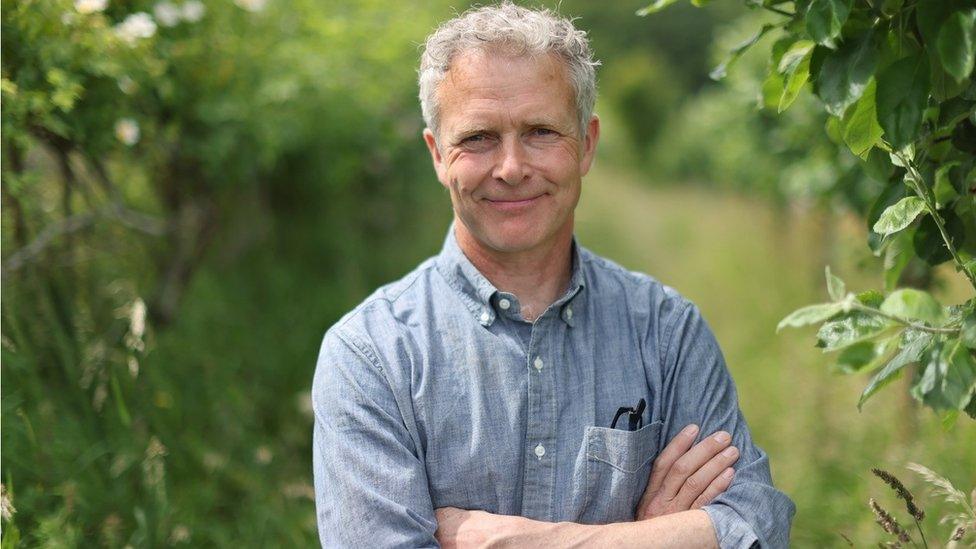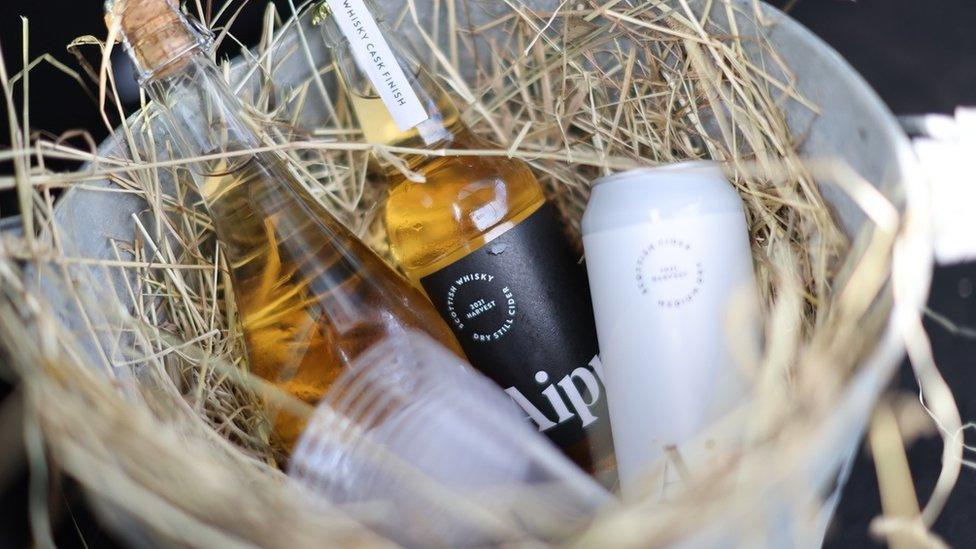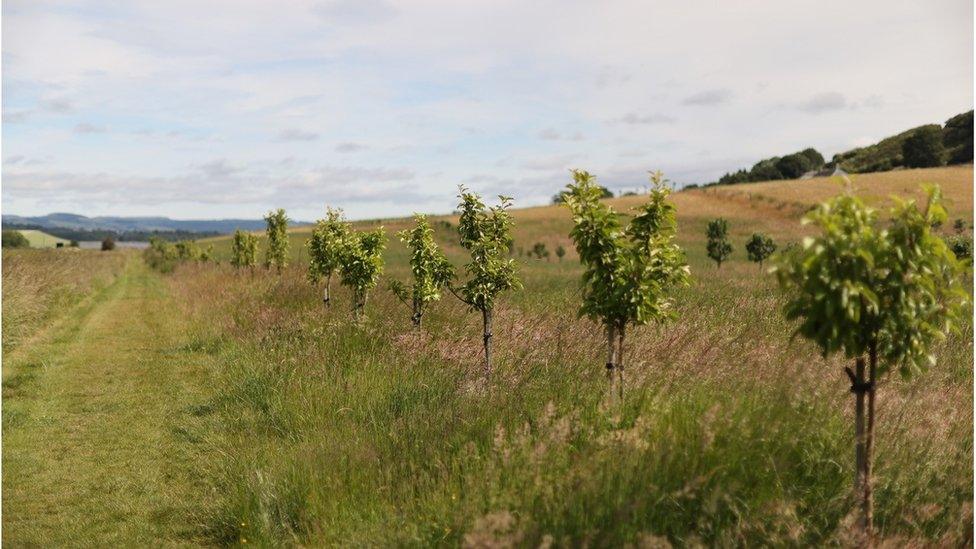Farmers need help to plant trees with their crops
- Published

Roger Howison says there is no real advice on how to alley crop trees
Now that the climate crisis calls for vastly more trees, a new report has said that the emphasis on expanding forestry has overlooked the opportunity to plant trees on farmland alongside conventional crops.
This is the approach taken by Roger and Rachel Howison from Newburgh in Fife.
They had a different view of farming when they took over the family business in 2011, so they diversified in a range of areas and now have one of Scotland's most advanced agroforestry businesses.
They grow cider apples on barley fields and say it benefits both nature and the crops.
The method they use is alley cropping, where widely-spaced alleys of trees or shrubs are grown in parallel lines with enough space in between for other plants to grow.
But there are concerns that barriers exist preventing other farmers in Scotland from doing the same.
Roger said: "There's no real official advice or manuals on how to alley crop a field.
"We wouldn't have done this if we hadn't been able to go to a (demonstration) farm down in Peterborough and see what it looked like."
Apples grown on the 725 trees at Parkhill Farm are processed into cider at a small winery nearby.

Parkhill Farm's apples are processed into cider nearby
They were among 10,000 native broadleaf trees that were planted on the farm.
But a report by Woodland Trust Scotland and Soil Association Scotland says current support mechanisms overlook the opportunity to plant trees within the farmed landscape.
Instead, it says, they place the emphasis on expanding forestry, often taking land out of agricultural production.
It calls on the Scottish government to urgently review funding to support growing more trees on farms and says there needs to be a "well-funded advice structure" to help farmers into agroforestry.
Dave McKay, from Soil Association Scotland, said: "Integrating trees on farms offers a viable and cost-effective way to enhance tree planting, without reducing agricultural production and therefore offshoring the impacts of the food system.
"We know that there are barriers, not least in terms of the mindset change that is required, but we also know that there is a huge level of interest in this from farmers and crofters in all parts of Scotland."
Roger and Rachel say they have noticed big nature benefits since they planted the fruit trees.

Small mammals like voles and mice are finding enough protection to nest around the base of the trees, and this also creates prey for a range of bird species.
Last year they spotted kestrels on the farm for the first time.
Arina Russell from Woodland Trust Scotland believes trees - planted in the right places - can offer shelter to both crops and livestock which increases productivity.
She added: "Woodland, hedgerows and individual trees support pollinators, reduce soil erosion and can enrich soil fertility. Trees integrated with farming and crofting can produce firewood, fruit and fodder for animals.
"All of these benefits can be gained by mainstreaming well-planned agroforestry across Scotland."
Scotland's rural affairs secretary Mairi Gougeon said: "We are exploring ways in which we can make small woodlands on farms more attractive."
She said this could possibly include considering whether they can be incorporated as an option to support Ecological Focus Area requirements under Greening, a farming subsidy for meeting environmental criteria.